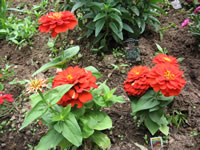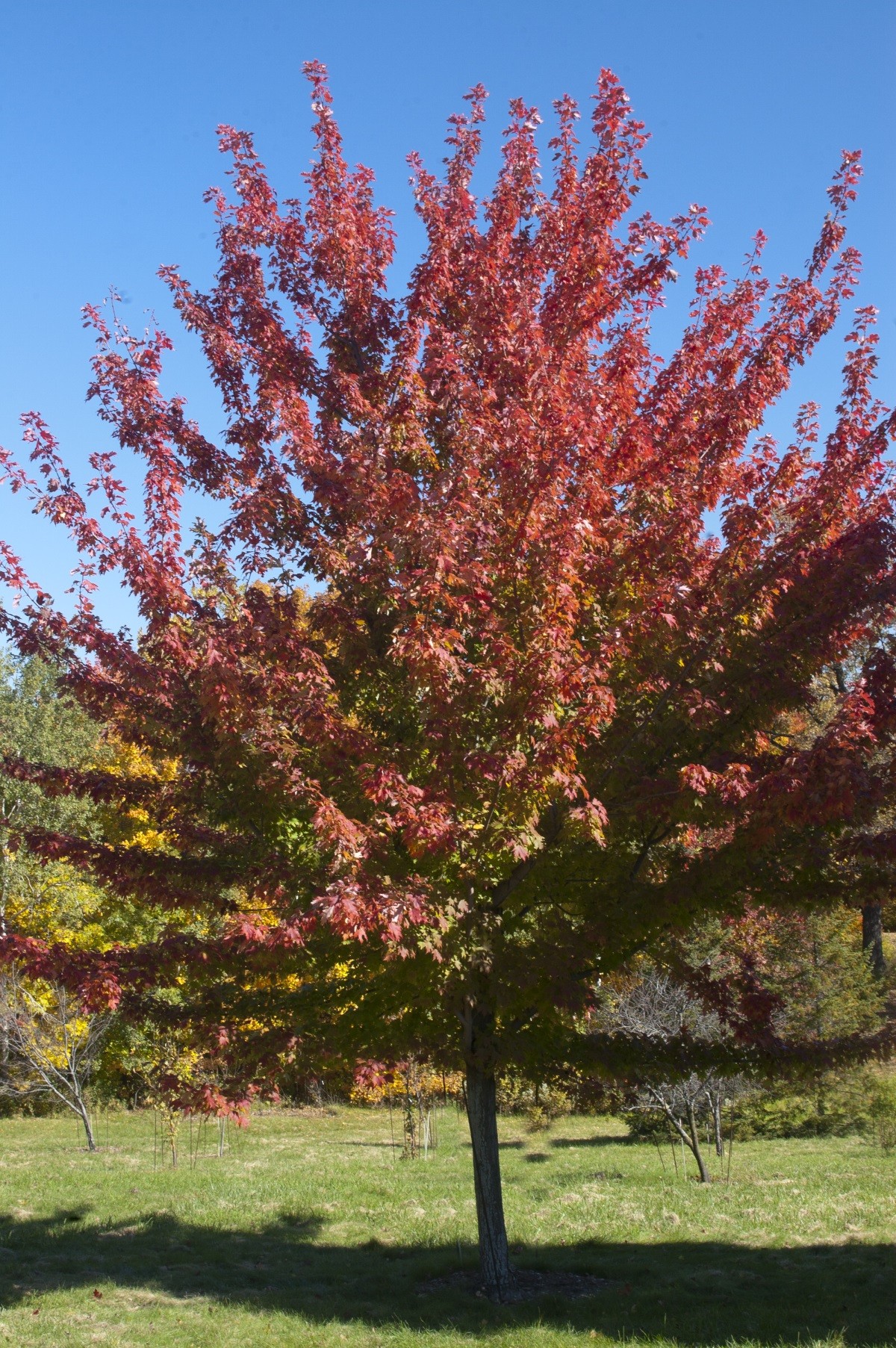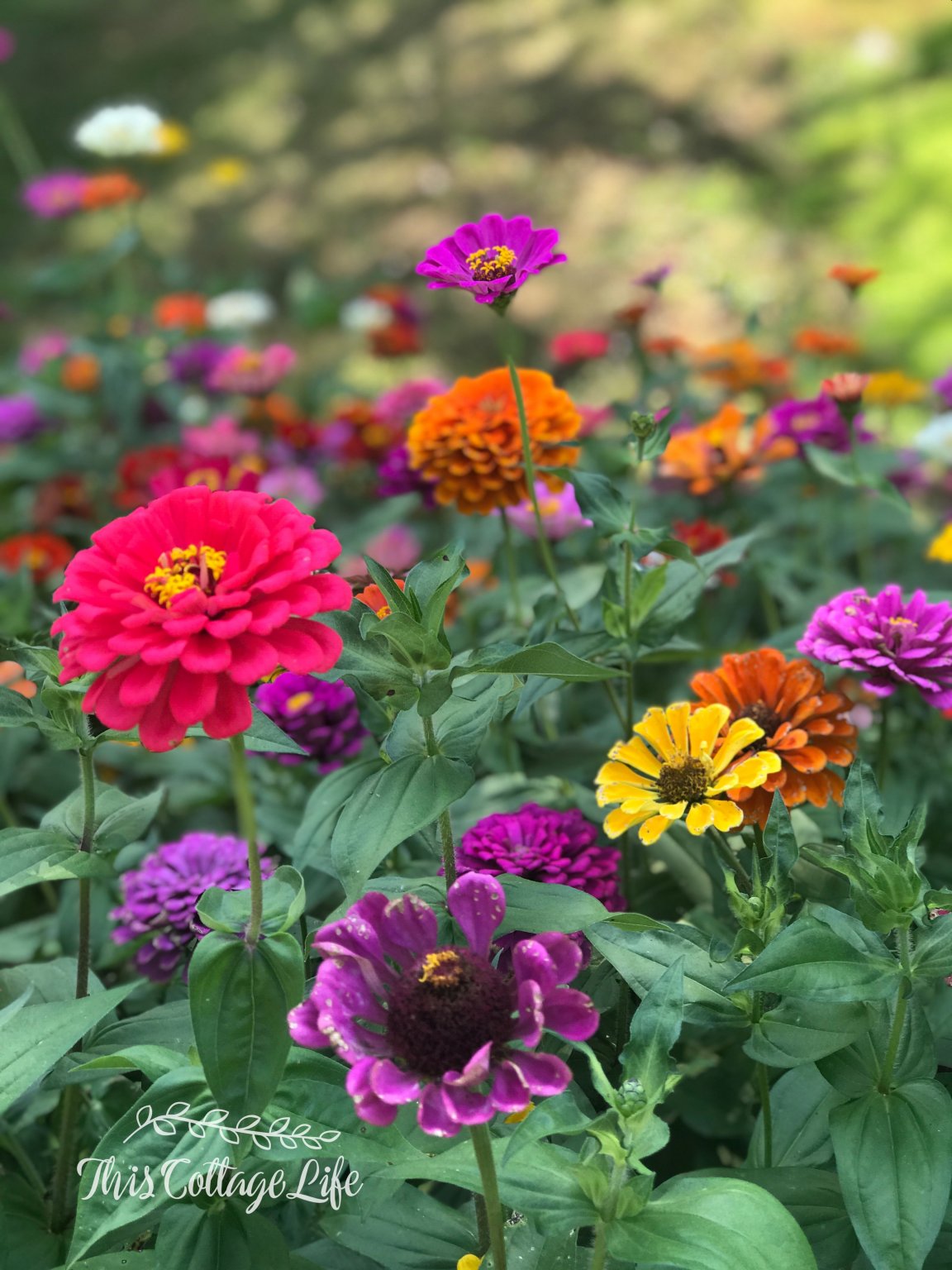Today’s topic is Where To Plant Zinnias. Obviously, you can find a great deal of where to plant zinnias-related content online. The proliferation of online platforms has streamlined our access to information.
There is a connection between the How To Grow Zinnias and Zinnia Seeds for Planting Outdoor Each Pack (2000+) Seeds Mixed Colors Garden Youth-and-Old-Age Cut Flowers Seeds information. more searching has to be done for Do Zinnias Come Back Every Year, which will also be related to How Much Water Do Zinnias Need.

39 Fun Facts Where To Plant Zinnias | Can You Plant Zinnias And Marigolds Together
- One year, I wanted to do an all-white them in my pollinator garden. I planted Polar Bear Zinnias from Baker Creek Seeds, which were incredibly beautiful. Unfortunately, this is how I learned that white flowers actually attract cabbage moths and ended up with a raised bed swarming in pests. Ever since, I’ve planted my beds in a wild variety of jewel tones and vibrant colors, with occasional white flowers throughout. - Source: Internet
- Zinnias come in a range of shape types, including varieties that resemble daisies or dahlias, tight blossoms in beehive shapes, small button blooms, and large floppy blossoms. As a quick, easy annual, you can tuck zinnias around other plants or make a full zinnia patch. Mix up height and color–have fun playing with the many options zinnias provide without having to cater to pickier plants. - Source: Internet
- The best flowers to grow in a cottage garden include zinnias, cosmos, black-eyed Susan’s, yarrow, lavender, butterfly bush, and roses. Mix in some herbs, and you’re done. The butterflies will go crazy! - Source: Internet
- Zinnia Overview Description Zinnias, which come in myriad shapes, sizes, and colors (excluding blue), are some of the toughest annuals you can plant. They’re also a pollinator favorite. Low-growing zinnias are perfect for borders. Taller varieties, which reach several feet high, make an excellent choice for cut flowers. Genus Name Zinnia Common Name Zinnia Plant Type Annual Light Sun Height 1 to 3 feet Width 12 to 18 inches Flower Color Green, Orange, Pink, Purple, Red, White, Yellow Foliage Color Blue/Green Season Features Fall Bloom, Summer Bloom Special Features Attracts Birds, Cut Flowers, Good for Containers, Low Maintenance Zones 10, 11, 2, 3, 4, 5, 6, 7, 8, 9 Propagation Seed, Stem Cuttings Problem Solvers Deer Resistant - Source: Internet
- Besides single colours, many varieties have been blended to create multi-coloured mixtures which will add jazzy pops of colour. Taller varieties also make good, long-lasting cut flowers. At this time of year you can sow them in seed trays under glass, pricking out seedlings and growing on in 7.5cm (3in) pots before planting out in June, or sow seeds directly. You can also nip down to the garden centre as it’s likely there will be zinnia plants available in trays ready for planting out. - Source: Internet
- The plant matter can be chopped and dropped in place to act as a mulch. Roots left intact will decay and feed the soil life, becoming rich soil. For more soil improvement ideas, see these articles: - Source: Internet
- The great news is that zinnia plant care is extremely easy. These tough plants are heat and drought-tolerant, and will endure cooler temperatures later in the fall as well. Follow these detailed care tips for the best outcome… - Source: Internet
- Native to grassland areas, zinnias are tough plants that handle drought well. Even though they grow best in well-drained organic soil, zinnias are extremely tolerant of poor soils, including hard clay. No matter where your zinnias grow, they will benefit from a slow-release fertilizer and the occasional liquid feed to keep them blooming all season long. This is especially true in container settings filled with a soilless potting medium. - Source: Internet
- Saving zinnia seeds is a good way to start next year’s plants. Because many zinnias are sold as mixes, you don’t have to worry about seedlings being identical to the parent plant. As old flower heads dry, remove spent blooms and harvest the small arrowhead-shaped seeds from between each of the petals. Zinnia seeds can be started directly in the ground the following spring. - Source: Internet
- Zinnias are easy to grow; they like full sun and well-drained soil. They can be transplanted or direct sown into the garden. If you choose to get an early start and plan to transplant, plant them in a peat pot that can be planted directly into the garden or planting bed, as not to disrupt the roots. - Source: Internet
- If you are starting them indoors, plant the seeds in small pots filled with well-drained potting mix. Place the pots in a sunny spot and keep the soil moist. Once the seedlings are big enough to handle and it is warm enough you can transplant them outside. - Source: Internet
- As a full-sun flower that likes warm weather, zinnias need the air and soil to be warmed to 70-plus degrees Fahrenheit to germinate and begin to thrive. If you plan to transplant zinnias, make sure not to disturb the roots or allow plants to become rootbound. That doesn’t mean you can’t make the most of the growing season, though. You still have a choice between starting zinnia seeds indoors or sowing seeds directly outdoors. - Source: Internet
- In warmer climates, zinnias can reseed themselves as annual wildflowers. But the rest of us must replant them every year. Fortunately, they mature quickly, so you can enjoy them for several months no matter where you live. - Source: Internet
- If you have dreams of growing an organic garden from A-Z, you may want to start at the end with some easy-growing, gorgeous zinnias. With broad blossoms, bright colors, and next to nothing to worry about ruining your tending efforts, zinnias are some of the easiest and most rewarding flowers to grow. Learn how to plant zinnia seeds for the best return and make a major impact on your garden or landscape this year. - Source: Internet
- The best way to keep zinnias blooming constantly is to prune or deadhead them (i.e.: remove the faded flowers) regularly. - Source: Internet
- Zinnias are one of the tried-and-true garden flowers recommended for even the most novice gardener. My first introduction to zinnias was from my earliest memory of gardening. There was always a row amongst the bush beans and tomatoes saved for zinnias. Zinnias are still my favorite annual flower and now they get a coveted spot next to my back deck so I can enjoy them while enjoying the summer weather. - Source: Internet
- Leaves turning brown – Could be from under watering, or sunburn on new plants. Never allow the soil to dry out completely. If your new starts or seedlings have brown leaves, then move them to a shady spot, and slowly introduce them to full sun over the next few weeks. - Source: Internet
- Zinnias are best started directly outdoors in locations where spring warms up early. Keep in mind that Zinnias are native to Mexico, where they have become accustomed to long, hot summers. They are classed as tender annuals and can be directly sown into the garden after all danger of frost is over and daytime temps are at least 50F and above. In cooler climates, start seeds indoors 4 to 6 weeks before your area’s average last-frost date. Harden off the plants by vacationing trays outside for a few hours per day before planting them in your garden. - Source: Internet
- If you need inspiration for growing zinnias, look no further. I’ve listed the top eight zinnia garden ideas for your backyard. Keep reading for more! - Source: Internet
- Growing zinnias is a fun way to add color and cut flowers to your garden. The gorgeous blooms are irresistible to people, as well as pollinators. Once you see just how effortless zinnias are to care for, you’ll want to fill your gardens and summer containers with them. - Source: Internet
- Because they come from prairie settings, zinnias prefer full sun. This environment nurtures the best bloom development. It also helps keep plants dry, which prevents common diseases such as powdery mildew—a condition most commonly seen as a white powder found on the plant’s bottom leaves. While this pesky fungus probably won’t kill the plants, it does diminish their beauty. The best control method for powdery mildew is prevention; look for resistant zinnia varieties and keep plenty of airflow around the plants. - Source: Internet
- In addition to zinnias’ spectacular garden show where ever you need a burst of color, zinnias are an incredible cut flower. Many varieties of zinnias will last from seven to 12 days in a vase. Zinnias are the workhorse of the farmer’s market, too. Flower farmers will attest that zinnias with their brilliant colors, easy care and long vase life are one of the most profitable flowers to grow. - Source: Internet
- Rows of flowers can be alternated with rows of vegetables, or every couple of rows. Sprinkle flower seeds in the spring when the rest of the garden is being planted. Flowers used in this way are considered a living mulch. - Source: Internet
- Zinnia elegans vary by height, with varieties growing between 12 and 36 inches tall. If you’re planting zinnias around the corners of your raised bed or in-ground vegetable garden, look for a shorter variety so that these sun-lovers don’t shade your fruiting plants. The taller varieties are perfect for pollinator gardens. - Source: Internet
- With any of these above-mentioned zinnia garden ideas, you’ll be adding fun pops of color to your landscape. Whether your yard is large or small, zinnias are the perfect low-maintenance flower to plant. Not to mention, they make the most darling cut flowers. - Source: Internet
- Leaf spot and blight are two more common diseases found in zinnias. Similar to powdery mildew, these conditions are caused by fungi. Control methods are the same: Remove any debris from the base of the plants to keep them clean. Many of these fungal diseases are found on the lower leaves of taller zinnia varieties used for cut flowers. Place shorter plants in front of taller zinnias to hide their naked stems. - Source: Internet
- Ladybugs were devouring aphids on the calendula, while the kale and broccoli nearby were pest-free. Beneficial braconid wasps covered the sweet alyssum and patrolled nearby crop plants. I was instantly hooked on this practice of integration! - Source: Internet
- Zinnias are native to Mexico and like hot weather. Zinnias prefer warm soil to germinate and grow. So don’t bother planting them out early. Soil temperatures of 70 to 80 degrees are ideal. - Source: Internet
- Zinnias flourish in hot, sunny conditions. So plant this one in the full sun if you can. They produce more blooms when they get at least 6-8 hours of direct sunshine every day. - Source: Internet
- There are few gardens that don’t have at least one salvia growing in them. Whether you have sun or shade, a dry garden or lots of rainfall, there’s an annual salvia that you’ll find indispensable. All attract hummingbirds, especially the red ones, and are great picks for hot, dry sites where you want tons of color all season. Most salvias don’t like cool weather, so plant them outdoors after all danger of frost has passed. - Source: Internet
- Example 2: Lettuce is the primary crop of a bed. Plant lettuce in the middle row, with shorter flowers in the southern-most row, and a taller or similarly sized crop behind it on the north side, such as radishes. Or plant taller flowers behind it on the north side, with a similarly sized crop in front of it on the south side, such as onions. - Source: Internet
- Water the area of your zinnia plants carefully, do not get the stems or leaves wet since zinnias are prone to mildew. Keep your zinnia garden lightly moistened, and let the area dry out between watering. The beauty of zinnias is that you can spend your attention elsewhere while they bloom profusely summer to autumn. - Source: Internet
- Considering the height, color, and shape combinations, there are dozens and dozens of zinnia varieties to choose from. Since it’s so easy to collect seeds from zinnia plants, try sticking with heirloom or open-pollinated varieties that will produce reliable replicas year after year. Still, there are lots of options when deciding which zinnias to plant. - Source: Internet
- Two of my favorite zinnia varieties are ‘Benary’s Giant’ and ‘Cut and Come Again.’ Their names tell their story. ‘Benary’s Giant’ are large bloomed, brilliant flowers on tall stems ranging from 40-52 inches. ‘Cut and Come Again’ just love to produce and, like all zinnias, if you cut the stem just above a bud joint, you’ll encourage your zinnias to produce nonstop throughout the growing season. - Source: Internet
- Planting seedlings means you’re going to tuck a baby plant into your garden bed. This plant will be one that you start indoors yourself or purchase from someone else. If you already start your own vegetable seeds at home you can just integrate the flowers into your seed starting calendar. Easy peasy! - Source: Internet
- Bacterial leaf spot can also attack zinnias. Symptoms include watery lesions that turn brown then black. It thrives as a result of water collecting on the leaves. - Source: Internet
- How do you plant your flowers, you ask? There are two options: direct seeding or planting seedlings. I personally prefer to plant all of my flowers as seedlings to get a jump start on the season. I want flowers as soon as I can get them! - Source: Internet
- Many experts encourage gardeners to plant a border of flowers around the perimeter of the garden. I do this, but I also encourage you to plant the following flowers among the crops. This can attract beneficial insects directly to where they’re needed. - Source: Internet
- Zinnias won’t bloom – There are a few reasons why zinnias won’t flower, or don’t have many buds. It’s caused by either too much shade, improper watering, or lack of nutrients. Make sure they are in a sunny location, that the soil drys slightly between waterings, but never bone dry, and that you feed them regularly. - Source: Internet
It’s crucial to be aware of the many electronic media sources available when researching Do Zinnias Come Back Every Year, such as Google and YouTube. You may also get info about Zinnia Soil Requirements on social media sites like Facebook and Twitter.
Video | Where To Plant Zinnias
It’s crucial to read to examine the authenticity of each source in order to acquire the greatest information regarding Zinnia Seeds. You’ll learn more about where to grow zinnias after watching the films included in this post, which come from a variety of different sources. Information on a wide range of topics may be easily accessed via the internet.
## Notable features of How To Grow Zinnias: The Ultimate Guide include:- Where To Plant Zinnias
- Where To Plant Zinnias Sun Or Shade
- Where To Plant Zinnias In A Vegetable Garden
- Where To Plant Zinnias Uk
- Where To Grow Zinnias

Because there are so many websites and forums that provide information about where to plant zinnias uk, it should not be difficult for you to locate the data that you want.
The majority of individuals are accustomed to taking a completely different approach when it comes to obtaining information regarding Do Zinnias Self Seed. This makes it possible to take a more in-depth look at the information that is available about What Vegetables To Plant With Zinnias and how it might be utilized.

methods for producing information displays about How Tall Do Zinnias Grow that are both aesthetically pleasing and functional. In commercial and marketing settings, as well as for the purpose of conveying information on How To Grow Zinnias From Seed Indoors, they are useful tools to have. Because of this, we also supply some photographs relating to Do Zinnias Self Seed.
In summing up, I’d like to say that this article offers a general summary of Zinnias In The Garden. Also covered are Do Zinnias Come Back Every Year and where to plant zinnias uk, which serve as a benchmark for evaluating the depth of your understanding of Zinnias In The Garden.